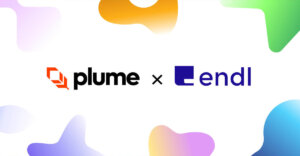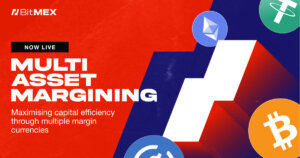 Five reasons why the Ethereum Merge will occur in June
Five reasons why the Ethereum Merge will occur in June Five reasons why the Ethereum Merge will occur in June
With the Ethereum Kiln testnet up and running, a merge test run recently completed successfully, and no major hurdles remaining, everything seems lined up for The Merge to commence as soon as all tests are done.

Cover art/illustration via CryptoSlate. Image includes combined content which may include AI-generated content.
The Kiln testnet was launched on the 10:th of March, and developers have now successfully completed a transition from the proof-of-work consensus mechanism to the looming proof-of-stake mechanism that the real Ethereum mainnet will merge to sometime this year.
With Kiln being the final testnet, there seem to be no major obstacles for the developers to get passed before a date, or rather block height, can be set for the actual merge. According to a post on Reddit by user “superphiz”, beyond the tests on Kiln, there are five additional indicators that the Ethereum (ETH) merge will occur in June.
“It’s really, actually very close”
On February 19, at the EthDenver conference, Ethereum researcher and implementation organizer Danny Ryan held a presentation titled “Ethereum Proof-of-Stake and our Solar Punk Future”.
The talk is worth listening to in its entirety, but at 13:30 into the presentation, Ryan says “It’s really, actually very close. I think he’s [the difficulty bomb] going to be impeccably timed. The difficulty bomb is set to go off, to begun to be felt, sometime in June, sometime in July.”
It’s evident that Ryan doesn’t expect a difficult bomb adjustment, and that the merged fork will occur in enough time to disarm the difficulty bomb.
The difficulty bomb is a proof-of-work protocol mechanism put in place to discourage proof-of-work miners from continue producing blocks on the post-merge proof-of-work blockchain, but rather transoítion their resources to produce blocks on the new proof-of-stake chain. The “bomb” raises the mining difficulty to such levels that producing blocks becomes economically unfeasible.
If proof-of-work miners keep producing blocks on the old chain, there will be no complete merge but rather i split – the old proof-of-work Ethereum will continue running and that’s something the Ethereum developers want to avoid at all costs.
Why was Kiln pushed back ten days?
Second, on the Consensus Layer Call #83 on the 10th of March, Ben Edgington, product owner for the proof-of-stake client Teku, pointedly asked Danny Ryan why Kiln was pushed back ten days.
“Just a quick recap on why it was pushed back ten days or so, because this is not what we agreed at the last meeting and I’m very mindful of little delays?” Edgington asked.
Ryan’s answer was that they were completing some technical items and needed to engage with the wider community, but it’s really the question that’s more telling. The fact that implementers are counting days tells us that they are working diligently to meet the June goal.
Third, the Merge Mainnet Readiness Checklist is nearing completion. Evaluating this checklist can be tricky because one cannot just compare “checked” versus “unchecked” boxes to estimate completion, but if we read the items carefully we’ll recognize that the most difficult items have been completed.
Kiln is widely expected to be the final testnet
Forth, on March 10, Marius Van Der Wijden, core developer on the Prysm client, announced the launch of the Kiln public merge testnet, as mentioned above. This is widely expected to be the final testnet before the existing testnests such as Goerli and Ropsten.
According to “superphiz”, anyone who has observed these events before will know that those testnets are merged with a launch-ready product. While we don’t know the planned timing for those testnet launches, it is very reasonable to expect a two-week delay between each testnet merge.
Fifth and final, the difficulty bomb is specified in EIP-4345 and suggests that the time between blocks will begin increasing around June 2022. Because the bomb goes off slowly and is based on block numbers (rather than clock time) it’s difficult to predict what the slow-motion explosion will look like in real-time.
Developers will be pushing against the clock in June
The difficulty bomb is put in place as an accountability mechanism to urge major upgrades to completion. Developers will be pushing against the clock in June to determine if they should do a hard fork to move the difficulty bomb, or use the rare hard fork opportunity to implement the merge.
At this time, there is no public statement of anyone encouraging moving the difficulty bomb without also implementing the merge. If we reach July without a merge date we’ll all need to pop some popcorn.
“All of these indicators strongly suggest that the merge is on track and will be deployed in June 2022. Here’s a funny thing about my prediction: I’d rather steadfastly predict June and be wrong, than lower the community expectation and be right. Let’s keep pushing for June,” “superphiz” concludes.



 CryptoQuant
CryptoQuant 





















































































